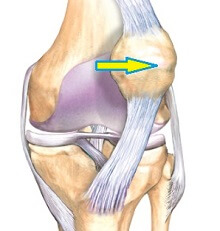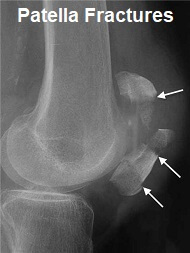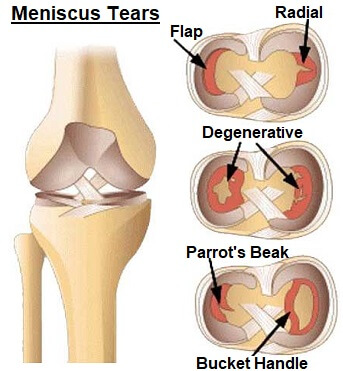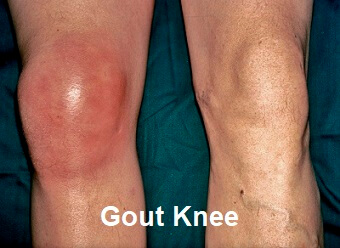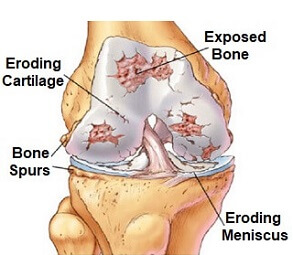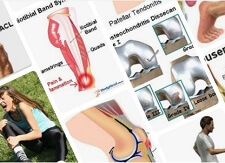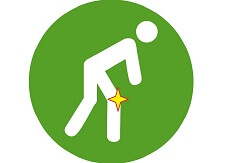- Home
- Knee Pain Diagnosis
- Severe Knee Pain
Severe Knee Pain
Written By: Chloe Wilson, BSc(Hons) Physiotherapy
Reviewed by: KPE Medical Review Board
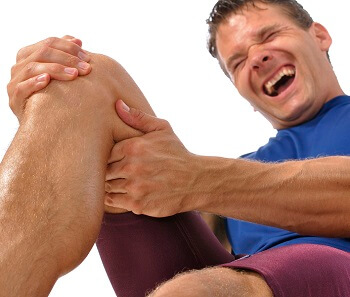
Severe knee pain can be extremely unpleasant and cause a great deal of anxiety.
It can affect your sleep, limit daily activities, stop you from doing the things you love and make it very hard to relax.
Knee pain is a common problem that affects around 25% of adults. Most people experience mild to moderate pain that settles down with self-care and non-invasive treatments such as physiotherapy. However, in some cases, knee pain is more severe and requires further intervention.
Severe knee pain often comes on suddenly and may be accompanied by other symptoms such as swelling, instability, hot, red skin or there may be an obvious deformity of the leg, depending on the underlying cause.
What Causes Severe Knee Pain?
The most common causes of severe knee pain are:
- Bone Injuries: fractures and joint dislocations
- Ligament Injuries: ACL, PCL, MCL or LCL tears
- Meniscus Tears: damage to the knee carilage
- Gout Knee: an inflammatory condition
- Muscle Injuries: strains and ruptures or the muscles or tendons
Other possible causes of severe knee pain include knee arthritis, septic arthritis and cellulitis.
1. Knee Bone Injuries
If severe knee pain is accompanied by an obvious deformity there is most likely a fracture (break) or dislocation on one of the knee bones.
If this is the case, you will usually be able to pinpoint the time it happened – there will have been a fairly major trauma such as a fall, hard tackle or RTA, and you will have excruciating knee pain. Bones don’t just break or dislocate without you knowing it so if the pain has built up more gradually, it's probably something else.
Knee Dislocations
Dislocations causes severe knee pain the moment the bones get pushed apart. They can happen at the knee cap or the knee joint.
- Kneecap Dislocations: are a common cause of severe knee pain. In most cases the patella dislocates to the outer side of the knee due to the shape of the joint. There will be a very obvious lump on the outer side of the knee and it will be extremely painful and difficult to move the knee. Find out more about the causes, symptoms, diagnosis and treatment options of patella dislocations.
- Knee Joint Dislocations: it is much harder to dislocate the knee than the kneecap. It takes a massive force to dislocate the tibia and femur so there will almost certainly be other injuries as well resulting in immediate severe knee pain and swelling.
Dislocated bones should be reset as soon as possible by a medical professional and follow-up treatment such as splinting/bracing and physical therapy are necessary to prevent chronic knee problems such as instability and ongoing pain and to reduce the risk of further dislocations.
Knee Fractures
Knee fractures are where one or more of the knee bones are broken, usually resulting in immediate severe knee pain and swelling.
When you break one of the knee bones there is often an audible popping or cracking sound at the time of injury and it will often be difficult to take weight through the leg. There may be a hard lump under the skin, or the broken segment of bone may have penetrated the skin.
Fractures of any of the knee bones cause severe knee pain. Patella fractures of the kneecap tend to occur when you fall onto the front of your knee from a height or during an RTA and will usually require surgery. Learn More >
In some cases, there may be a small hairline fracture of one of the bones. In this case, again you will usually be able to pinpoint a time of injury, but the pain and swelling may gradually build up over a couple of days and not be so severe.
If you suspect your severe knee pain is due to a fracture or dislocation, seek urgent medical attention immediately.
2. Knee Ligament Injuries
Another common cause of severe knee pain is a tear to one or more of the four knee ligaments, usually due to sudden overloading or overstretching.
There are three grades of knee ligament tear:
- Grade 1: Where only a few fibers are torn. There is usually mild pain and swelling but no instability
- Grade 2: More fibers are torn but the ligament is still intact. There may be moderate – severe knee pain and swelling and some mild instability
- Grade 3: Complete rupture of the ligament. There is usually sudden, excruciating knee pain and swelling, often accompanied by instability
Ligament tears are often a result of twisting injuries or the knee being pushed out of position e.g. in a sporting tackle, and are often accompanied by an audible pop or cracking noise.
The greater the degree of damage, the more intense the knee pain and swelling will be and the quicker they will develop.
The most common ligament tears to cause severe knee pain are ACL injuries and MCL tears.
Treatment for ligament tears will depend on the severity of the injury and which ligament is affected. In most cases it will involve a combination of rest, ice, exercises and a knee brace if there is some instability, but if the ligament ruptures completely, then surgery may be required.
Find out more about the common causes, symptoms, diagnosis and treatment options in the Ligament Tears section.
3. Knee Meniscus Tears
Meniscus tears are another common cause of severe knee pain. The knee joint is protected by a special layer of cartilage known as the meniscus. If the meniscus is torn, it causes bleeding and inflammation in the joint.
Depending on the location and extent of the damage to the cartilage, this can cause severe knee pain and swelling as well as limiting knee movement.
The symptoms of meniscus tears often build up over a couple of days and the pain tends to get worse as the swelling increases.
There are two main causes of meniscus damage:
- Wear and Tear: where the meniscus thins and frays, usually associated with arthritis and aging
- Twisting Injury: typically when the foot is fixed to the floor and the knee is slightly bent, will often tear part of the meniscus
Knee pain from a meniscus tear tends to get worse when you try to bend the knee or take any weight on it. A classic symptom is locking at the knee joint – where the leg gets stuck in a certain position, unable to move.
Meniscus tears are notoriously slow to heal and treatment should be started as soon as possible.
Find out more about the common causes, symptoms and treatment options in the Meniscus Tear section.
4. Gout Knee
Severe knee pain that starts very suddenly where the knee swells, looks red and feels hot to touch is usually caused by gout knee.
The symptoms of gout usually develop very quickly, usually at night time when our body temperature drops, causing sudden, severe knee pain. High levels of uric acid lead to the formation of crystals in the joint which causes inflammation.
With gout, the skin around the knee often looks red and shiny and there may be lumps underneath the skin. The pain is often so severe that it is difficult to walk. Gout attacks usually last a couple of weeks but episodes frequently recur.
You can find out everything you need to know about gout and how to treat it in the gout knee section.
5. Knee Muscle Injuries
Another common cause of severe knee pain and thigh pain are muscle tears. If a muscle is suddenly overloaded or overstretched, then the strain through the muscle is too great, tearing some of the muscle fibers.
The most common muscle injuries that cause severe knee pain are:
- Pulled Quads Muscle: tearing in the quadriceps muscles on the front of the thigh
- Quads Tendon Rupture: complete tear of the quads tendon just above the kneecap
- Pulled Hamstrings Muscle: tear in the hamstring muscles on the back of the thigh
- Pulled Calf Muscle: tearing of one the calf muscles on the back of the lower leg
There are three grades of muscle strain relating to the extent of damage. Grade one and two tears, where only some of the muscle fibres are torn tend to cause minimal to moderate knee pain and limitation.
But grade three tears, where the muscle or tendon tears completely, known as a rupture are much more serious. They cause severe knee pain, swelling, bruising, weakness and functional limitation.
Severe pain from a muscle tear is usually felt immediately at the time of injury and is often accompanied by a popping noise or tearing sensation.
Other Possible Causes Of Severe Knee Pain
There are a few other conditions that can cause severe knee pain:
1. Knee Arthritis
Knee arthritis can cause of severe pain and swelling in people typically over the age of 70. Wear and tear on the joint leads to bone and cartilage damage which irritates the joint and causes swelling.
The symptoms of arthritis often fluctuate with people swinging between good periods with minimal symptoms to flare ups where there may be excruciating knee pain and swelling.
In many cases, symptoms may be mild to moderate and can be managed with medication, exercises, knee supports and diet, but if the pain becomes so severe that it affects your sleep or majorly limits your daily activities, then surgery may be necessary.
In the arthritis section you will find loads of information about the different types of arthritis, the causes, symptoms, stages and best treatment options.
2. Septic Arthritis
Septic arthritis can cause severe knee pain and is caused by a bacterial infection in the joint. It most commonly affects the knees and feet and may affect more than one joint at a time. Septic arthritis typically causes severe knee pain, swelling and redness and the joint feels hot to touch.
Symptoms of septic arthritis usually come on fairly quickly over a few hours/days and may make it difficult to move the knee or take any weight through it. It often makes you feel quite unwell and you may develop a fever.
Septic arthritis is usually diagnosed by a blood test and treated with antibiotics. It usually takes 3-7 days for the severe knee pain to settle down and it is really important to take the full course of antibiotics, even if your symptoms settle quicker.
3. Cellulitis
Cellulitis is one of the more rare, but serious causes of severe knee pain. Cellulitis develops when bacteria enter the body through a cut or scrape causing an infection. There may be only very minor damage to the surface of the skin around the knee such as a small graze or tiny cut, but that is enough for the bacteria to enter the body.
With cellulitis the area will appear red, hot, swollen, be tender to touch and there may be severe knee pain. You may feel generally unwell with a fever and nausea and lymph nodes may become enlarged.
Cellulitis does not get better on its own, it requires antibiotics, so if you feel cellulitis is the cause of your severe knee pain, see your doctor immediately.
When To See Your Doctor
Severe knee pain can be an indication that there is something serious going on and you should see your doctor if:
- Your knee looks deformed
- You can’t put any weight through the leg
- Your knee movements are limited – can’t fully bend or straighten the knee
- You have severe knee pain at night or when resting
- Your knee keeps giving way
- You feel unwell or have a fever
- There is redness or the knee feels hot
- There is major swelling around the knee
- Your symptoms persist or get worse
- You have pain, swelling, redness, tingling or numbness in the calf
Severe Knee Pain Symptoms
Severe knee pain is often accompanied by other symptoms which can help you to work out what is wrong.
Severe Knee Pain & Swelling: Severe knee pain accompanied by knee swelling usually indicates a problem inside the knee joint. The most likely culprits are a ligament sprain or cartilage tear.
Severe Knee Pain & Instability: When severe knee pain is accompanied by instability usually points to a ligament injury. If the knee gives out completely i.e. collapses so that you stumble or fall, it is likely that you have ruptured one of the knee ligaments, such as a complete ACL tear. If however the knee feels wobbly but doesn't actually give way, it's likely that a ligament was overstretched but remains intact, known as a knee sprain.
Swollen, Red & Hot Knee: Severe knee pain that is accompanied by swelling, redness and heat is most likely due to gout, septic arthritis or cellulitis and may require antibiotics.
Sudden, Severe Knee Pain: Severe knee pain that comes on very suddenly at night with no obvious cause usually indicates gout knee. If however the severe knee pain started after some kind of accident e.g. fall, RTA or sports, then you may have broken or dislocated part of the knee -knee cap injuries are particularly common. If the pain is in one of the muscles, then a muscle tear is the likely culprit - hamstring tear (back of thigh), quads tear (front of thigh) or calf tear (back of shin)
Severe Knee Pain With Deformity: If your knee looks deformed or out of shape, you problem have some kind of bony injury. If there is a large obvious lump on the outer side of the knee, you've probably got a dislocated kneecap.
What Else Can Help?
If you are still not sure what is causing your severe knee pain, visit the knee pain diagnosis section where we help you work out what is going on by thinking about the location of the pain e.g. front, back or side of the knee.
Alternatively, in the knee symptoms guide we look at other symptoms typically linked with knee pain such as pain when running or bending, knee locking, sharp pain or pain on the stairs. And remember, if you are suffering from severe knee pain, get checked out by your doctor as soon as possible.
You might also be interested in the following articles:
- Front Knee Pain
- Outer Knee Pain
- Inner Knee Pain
- Pain Behind The Knee
- Pain Below The Knee
- Burning Knee Pain
- Knee Range Of Motion
- Knee Pain On Stairs
- Knee Pain & Popping
- Swollen Knee Treatment
Related Articles
References
1. Clinical Journal Of Pain: The influence of knee pain location on symptoms, functional status and knee-related quality of life in older adults with chronic knee pain: data from the Osteoarthritis Initiative. June 2017
2. BMC Musculoskeletal Disorders: Management of chronic knee pain: A survey of patient preferences and treatment received. September 2008
3. British Journal of General Practice: Defining knee pain trajectories in early symptomatic knee osteoarthritis in primary care: 5-year results from a nationwide prospective cohort study. 2016
Last Updated: October 1st, 2025
Next Review Due: October 1st, 2027
